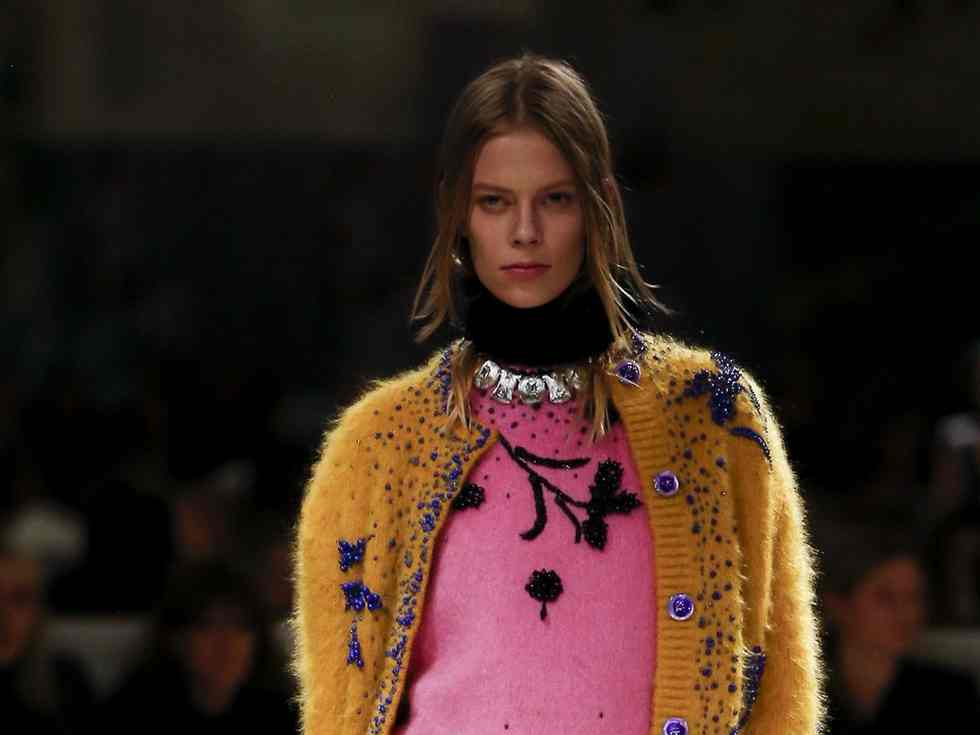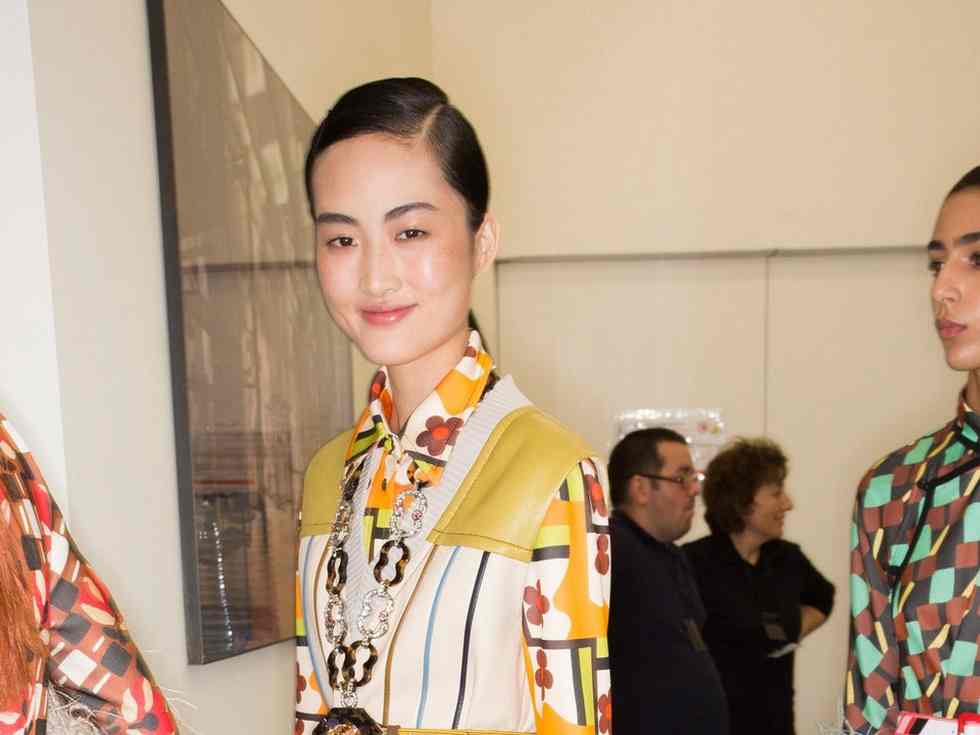How Vogue Is Lastly Working To Sort out Local weather Change

Maybe it was seeing the Amazon rainforest burning. Maybe it was listening to Greta Thunberg’s impassioned speech on the United Nations Local weather Motion Summit in New York. Maybe it was encountering Extinction Rise up supporters campaigning outdoors Victoria Beckham’s catwalk venue with placards that learn: “Enterprise As Traditional Is Killing The Planet.” Regardless of the motive, if 2019 was the 12 months the style business owned as much as its simple impression on local weather change, 2020 appears to be like set to be the 12 months it takes motion.
There’s a brand new temper sweeping by way of trend proper now. It’s slightly bit sombre and retrospective. Conversations in regards to the environmental impression of all the pieces we do – from utilizing takeaway espresso cups to the polyester materials that shed 1000’s of microplastic fibres each time we do the washing – are inescapable. So are the statistics: Britain consumes garments on the quickest charge in Europe; and, by 2030, international attire consumption is projected to have risen by 63 per cent – the equal of greater than 500 billion further T-shirts. The excellent news? An elevated deal with the surroundings is altering the way in which many trend designers are making and displaying their collections – to not point out the way in which shoppers are procuring.
Carbon emissions have been the large speaking level on the spring/summer time 2020 exhibits. In New York, in September, Gabriela Hearst kicked off the dialogue when she declared her present carbon impartial, offsetting the emissions ensuing from the catwalk presentation with EcoAct. A number of days later, she was in London for the opening of her Norman Foster-designed flagship retailer on Conduit Road (the style world doesn’t but have Thunberg’s zero tolerance for air miles). Relatively than displaying me the luxurious cashmere knits made by a girls’s co-operative in her native Uruguay, or the stunning variations of tone within the chrome-free, vegetable-tanned leather-based on the store flooring, she ushered me into the basement storage cabinet to current me with the recycled cardboard hangers she had developed as a part of her firm’s pledge to go plastic-free.
“That is what I need you to see,” she stated, triumphantly holding up a recyclable cardboard hanger produced by an Israeli firm, as she instructed me in regards to the 20 billion plastic hangers that go to landfill annually. “This, for me, is gorgeous.” She additionally identified the compostable packaging – “24 weeks versus 500 years” – used to wrap the inventory: “I’m displaying you this as a result of there are individuals who speak about issues after which there’s the doing. We’re the doing and never a lot of the speaking.”
Subsequent up, at London Vogue Week, Phoebe English, re-energised by a two-season hiatus from the present schedule, unveiled her presentation: Makes an attempt at Sustainability Options. She set out concepts for decreasing and upcycling her eponymous model’s waste; shared her materials analysis (smashing by way of the secrecy that has historically stopped designers spreading finest apply); offered the e-mail handle of her ocean-waste plastic suppliers, Econyl; and the main points for her licensed natural cotton. They might additionally be part of the WhatsApp group she began, Vogue on Earth, which helps designers and educators share their ideas and sources. The group at the moment has greater than 119 members, together with sustainable designer Richard Malone; Cat Teatum and Rob Jones of Teatum Jones; the upcycler Matthew Needham; Martina Spetlova, who’s utilizing blockchain know-how to trace provide chains; representatives from Katharine Hamnett and Extinction Rise up Vogue Motion; Orsola de Castro, co-founder of Vogue Revolution, the marketing campaign that asks #whomademyclothes; and Nina Marenzi, founding father of The Sustainable Angle, whose material expo on the finish of January has change into a must-see for manufacturers or designers critical about discovering renewable supplies. Graeme Raeburn (brother of Christopher) additionally urged constructing a communal fabric-shopping checklist in order that they may pool sources and cut up up minimal quotas on orders – a pertinent situation for a lot of impartial designers making an attempt to supply extra sustainable materials in small portions. It is a group that’s dedicated to altering the way in which they work, in addition to creating complete new programs for producing, promoting and re-circulating garments and uncooked supplies.
In Milan, Gucci introduced it was to change into fully carbon impartial, offsetting any emissions that it’s at the moment unable to scale back or remove by partnering with Redd+; a UN challenge to scale back emissions from deforestation in Peru, Kenya, Indonesia and Cambodia. “The extra time that goes by, the extra reviews from the scientists are clear – the planet has gone too far,” Marco Bizzarri, Gucci’s chief govt, instructed The Guardian. The LVMH group swiftly adopted go well with in Paris, drawing consideration to its environmental constitution and dedication to make sure full traceability of its uncooked supplies by 2025, plus the €10 million it has pledged to safeguard the Amazon.
Different designers spoke of the necessity to simplify. Miuccia Prada despatched a sign that the tradition of disposability – which finds its forex in fleeting developments – is over, and declared: “Private fashion is extra vital than garments.” Her catwalk was crammed with wearable wardrobe classics: embroidered pencil skirts, fairly night clothes, sharply tailor-made jackets. Even Prada’s well-known nylon baggage are going inexperienced: by 2021, the Re-Nylon challenge goals to transform all virgin nylon to regenerated nylon. Manufacturers comparable to Chanel famous that its elaborate present units can be recycled, and Louis Vuitton’s stripped-back pine set was sourced from sustainably managed pine forests in France, and later donated for reuse as a part of a partnership with ArtStock, an organization that recycles props, units and stage tools.
With main social, cultural and client shifts come seismic modifications in enterprise fashions. Excessive time, too: in response to the Waste and Sources Motion Programme there’s a whopping £30 billion value of unworn clothes hanging in British wardrobes. We’re being urged to cease shopping for a lot, to look into our wardrobes and make use of what’s already there, fairly than continually looking for one thing new.
Vogue is cognisant of the shift. When researching the appears to be like for this shoot, contributing trend director Kate Phelan blended items from previous collections with these from the most recent resort exhibits. There are some unforgettable blasts from the previous, comparable to Katharine Hamnett’s “Pershing” T-shirt – which she wore to tackle then-prime minister Margaret Thatcher in 1984. There are additionally hints at what’s to come back, because of Amsterdam-based designer Duran Lantink, who finds designer items on resale websites earlier than reducing them up and collaging them again collectively to make one thing new. “We’re trying on the longevity of what designers make and promote,” says Phelan. “They don’t have to begin from scratch each time they make a group. I nonetheless have garments from years in the past that I combine in with more moderen appears to be like – an previous Chanel jacket that may stand the take a look at of time, say. Stuff you by no means get tired of.” (Even Taylor Swift is in classic Chanel on this month’s cowl.)
Whereas that is, in fact, a mirrored image of how many people already costume, it additionally highlights a vastly disruptive new child on the retail block: luxurious trend resale websites comparable to Vestiaire Collective, Hardly Ever Worn It, Farfetch’s Second Life and The RealReal. “I don’t assume individuals are as squeamish about shopping for second-hand as they was,” Phelan says. “Procuring someplace like Vestiaire is a special expertise than rooting by way of the rails in a classic garments retailer.” The season to which these items “belong” is quick changing into irrelevant. “Good garments do maintain their worth,” she insists.
An archival strategy is more and more vital – whether or not in our personal wardrobes or as a method for manufacturers to maintain their garments in circulation longer (and maybe to maintain them from being resold elsewhere). The Stockholm-and London-based model Chew Studios is experimenting with build up its personal archive on-line, the place clients can return items as soon as they’ve completed with them in order that they are often resold. Artistic director Elliot Atkinson is happy in regards to the prospects of creating trend an funding over time. “It’s figuring out the way to do it so it accrues worth, to make an archive and redesign it by naturally dyeing and over-dyeing it, or portray artworks on prime of it so as to add worth to the items. It turns into one thing else and evolves. Every bit has handcraft utilized to it in a roundabout way.”
The normal bricks-and-mortar shops are reacting to this shift, too. Selfridges opened a Depop area final September, as a part of a push to encourage resale, and 24-year-old Central Saint Martins graduate Patrick McDowell ran an upcycling workshop on the store flooring. “It positively feels just like the previous and the brand new guard in some methods,” he says, as a part of the brand new wave of environmentally acutely aware designers who’re embedding sustainable pondering into their model DNA. “We’re fortunate as a result of we’re sufficiently small to vary with new developments as they occur.”
McDowell’s collections are made utilizing deadstock and salvaged materials which may in any other case find yourself in landfill, and given a heavy dusting of rejected Swarovski crystals. “My earnings are actually linked to how sustainable I’m, and other people come to me due to that. I’ve set myself as much as doubtlessly fail as a model if I sell-out. That’s an excellent scenario to have locked your self into.”
However designers comparable to McDowell want a complete new ecosystem if they’re to thrive. At Selfridges, sustainability guide Alex McIntosh is nicely positioned to clean the way in which for all kinds of recent enterprise fashions. Not solely does he give a platform to the burgeoning resale market (a pop-up with Vestiaire Collective opened in October), he additionally trains the shop’s patrons to ask the precise questions of manufacturers and designers to make sure that they meet sure moral requirements. All whereas working with the irregular manufacturing cycles and slight variations on product that upcycled and deadstock supplies can carry. “It’s probably the most thrilling time proper now,” says McIntosh – who additionally heads up the College of the Arts London’s Vogue Futures MA on the London School of Vogue. “I really feel like a variety of stuff I’ve been engaged on in an instructional context is beginning to be heard within the enterprise context.”
For Matchesfashion.com, a brand new era of manufacturers is making a few of the most attention-grabbing garments – the debut assortment of Ssone, the most recent buzzy sustainable label, is stocked solely with them. Caroline Smithson, Ssone’s founder and artistic director, says she enjoys spending time taking place rabbit holes in quest of botanically dyed wool, say, or potato sacks with which to package deal up her orders. Whereas her model is new, Smithson has greater than 20 years’ expertise working all over the place from Levi’s to Louis Vuitton. She is aware of how wasteful the business is; how polluting it may be; how disconnected the inventive groups will be from their very own provide chains, the provenance of their supplies, the individuals who make the garments. And it’s exactly this expertise that has formed her first solo enterprise, and made her rethink each final element. Swing tags are made utilizing a by-product of the beer business; cotton jeans are natural and recycled; the superbly crisp hemp is spun and woven in Italy (requiring a 3rd of the water utilized in cotton manufacturing); zips are constructed from recycled polyester. “It’s a hell of a variety of analysis,” she says, “all the pieces is taken into account.” Finally she is designing for different girls who share her world-view. “What I purchase in a 12 months, I might depend on one hand,” Smithson says – and that features one or two items of classic.
And that, absolutely, is the crux of the matter. The style business must adapt to this palpable need for issues to decelerate, be extra thoughtful in the way it makes and the sources it makes use of. If meaning taking the time and care to remake one thing new out of one thing previous, or the shoppers of trend rediscovering one thing particular hanging behind the wardrobe, then saving the planet instantly appears rather less daunting.
Extra from British Vogue:


